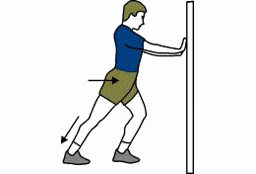Northern Virginia stretching guide for healthy backpacking
Stretching is essential when backpacking, particularly if you are hiking or travelling with a heavy one. A good stretching routine can help to minimize muscle imbalances, prevent injury, and improve your ability to use your backpack for longer periods. The following stretching program is designed for backpack users who do not have any current injuries or individual stretching needs. If you have an injury, or a specific mechanical imbalance that may be holding back your ability to regularly use your backpack, your Dynamics Physical Therapy physical therapist can design a stretching program more specific for you.
When is the Best Time to Stretch?
When your muscles are warm and relaxed! For optimum performance you should stretch after you have done a general body warm up of about 5-10 minutes. If you are going out hiking, or travelling with a backpack this might mean stretching after a short 5 minute brisk, walk or jog. Dynamic stretches are used to prepare your muscles for donning the backpack and walking or hiking while carrying the weight of the pack. Static stretches, on the other hand, are more useful to improve your overall flexibility and are most effectively done after your hike or walk, once you take the backpack off and as part of your cool down. With backpacking or hiking, a good static stretch at the end of you hike or travels will help relieve any tension from carrying the weight and make sure you can carry on again tomorrow!
Both the dynamic and static stretching routines below can also be useful if you have to carry a heavier backpack to school or work on occasion, but remember, there are weight guidelines for regular backpack use to prevent injury. Refer to our guide here Choosing a Backpack and Related Equipment to ensure you aren’t overloading yourself on a daily basis.
Rules for Dynamic Stretching:Warm up your body first, then stretch while your muscles are still warm.
- Move through your range of movement, keeping control of the movement with your muscles. Do not allow momentum to control the movement by "flinging" or "throwing" your body parts around.
- You may feel light resistance in your muscles, but you should never feel pain during a stretch.
- Start with slow, low intensity movements, and gradually progress to full-speed movements through range of motion. Complete these motions for several repetitions (10-15 times.)
Rules for Static Stretching:
- Be sure to stretch while the muscles are still warm from hiking or walking with your backpack.
- Slowly take your muscles to the end of their range. You will feel slight resistance in the muscle, but you should never feel pain during a stretch.
- Hold the stretch in a static position. Do not bounce.
- Maintain each stretch for 20-30 seconds. Repeat each stretch 3-4 times.
Essential Stretches when using a backpack:
These muscles are the key muscles used when carrying a backpack as well as when donning the pack and taking it off. Don't forget to stretch both sides. The stretching program shown below will take about 10-15 minutes to complete.
Dynamic Stretches:
Arm Swings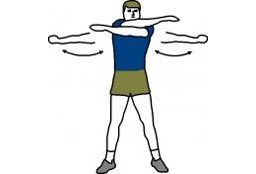 Repeated Cervical Rotation
Repeated Cervical Rotation Shoulder Rotations
Shoulder Rotations
 Leg Swings Forward and Back
Leg Swings Forward and Back
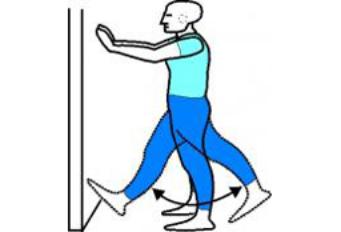
Back Rotation Stretch:
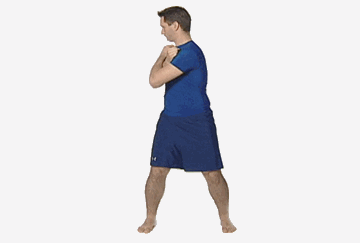 Lunges
Lunges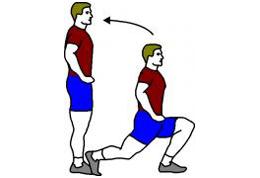 Static Stretches
Static Stretches
Neck Stretch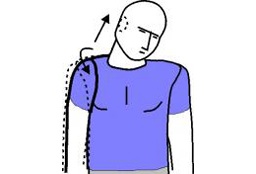
Posterior Shoulder Stretch Standing Back Extension Stretch
Standing Back Extension Stretch
Standing Back Flexion Stretch
Hamstring stretch
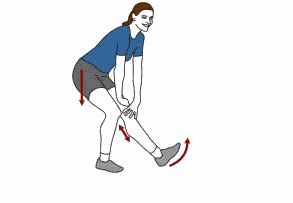 Quadriceps stretch
Quadriceps stretch
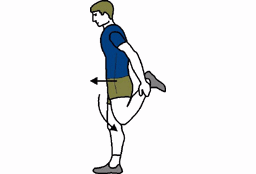
Hip Flexor Stretch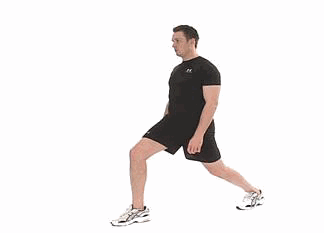 Gluteal Stretch
Gluteal Stretch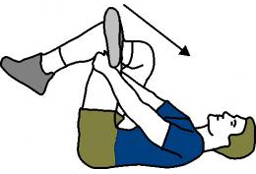 Calf Stretch-Gastrocnemius
Calf Stretch-Gastrocnemius